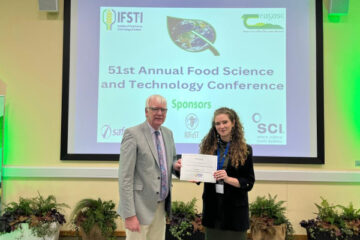Following the detection of pesticides in drinking water sources in Co. Longford, farmers are being urged to use best practice when applying pesticides to their land.
The presence of pesticides in drinking water in Co. Longford have been detected.
Irish Water, working in partnership with the National Pesticides and Drinking Water Action Group, are appealing to farmers and other users of pesticides to follow the guidelines when applying these substances to their lands.
MCPA, which is commonly used to kill rushes on wet land, is the main offender, and careless storage, handling and improper application means it ends up in our drinking water leading to breaches of the drinking water regulations.
According to Irish Water, a single drop of pesticide can breach the drinking water limit in a small stream for up to 30 kilometres. This clearly highlights the potential risk facing many of Ireland’s drinking water sources.
While there is no threat to public health, it is imperative that users of pesticides are mindful of best practice when spraying their lands.
In Longford the exceedances were noted twice in Longford Central and once in Ballymahon in 2016. Exceedances were also noted three times on the Longford Central in 2017, at locations in Newtownforbes, Longford Town and Clondra.
Commenting ahead of the 2018 spraying season, Andrew Boylan, Irish Water’s Regional Drinking Water Compliance Specialist, said:
“Irish Water is continuing its extensive investment programme to improve water and wastewater services in Ireland. Providing safe, clean drinking water for all is our first priority. In Ireland, the majority (82 per cent) of drinking water supplies come from surface water sources (water from rivers, lakes and streams). Such supplies are vulnerable to contamination from land and animal run-off.
“Two different supplies in County Longford have seen the herbicide MCPA detected over the past two years, albeit mostly at very low levels. MCPA is used mainly for eradicating rushes, a problem for many years on Irish farms and one that looks like continuing for many more years. It is also found in other weed killer formulations used by gardeners and growers, so its use is quite widespread.”
Dr. Aidan Moody, Chair of NPDWAG, added:
“The continued engagement of all stakeholders, working in partnership, is needed to tackle this issue. Users of pesticides should make sure that they are aware of the best practice measures that should be followed to protect water quality.”
Detections of pesticides in drinking water found across the country
Spring is a time of year for new growth and many people are getting back out into their fields and gardens to assess the effects of winter and prepare for the year ahead. In many cases, they are finding that weeds of various kinds have taken over and action needs to be taken to leave space for the plants they want to grow. In the modern era, the use of pesticides has played a central role but the effects of this can be far reaching and more and more detections of pesticides in drinking water are being found across the country.
The basic steps in reducing pesticide risks are as follows:
- Choose the right pesticide product
- Read and follow the product label
- Determine the right amount to purchase and use
- Don’t spray if rain or strong wind is forecast in the next 48 hours
- Make sure you are aware of the location of all nearby water courses
- Comply with any buffer zone specified on the product label to protect the aquatic environment. Mark out the specified buffer zone from the edge of the river or lake or other water course
- Never fill a sprayer directly from a water course or carry out mixing, loading or other handling operations beside a water course
- Avoid spills, stay well back from open drains and rinse empty containers 3 times into the sprayer
- Store and dispose of pesticides and their containers properly
The efforts to reduce the incidence of these detections are being coordinated by the NPDWAG. This group is chaired by the Department of Agriculture, Food and the Marine.
All of the key stakeholders are represented in this group and include other Government departments and agencies; local authorities; industry representative bodies; farming organisations; water sector organisations; and amenity sector organisations.



